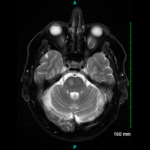The use of IL-6 inhibitors comes with a special concern in Takayasu’s patients, he warned. Some patients progress even though the symptoms have resolved and inflammatory markers are normal. In one study, three out of 10 relapsed clinically and on radiographic imaging, even though their acute phase markers were normal.3
“Treatment may improve symptoms and markers, but you have to be cautious and follow these patients very closely by clinical evaluation and radiographic imaging studies to monitor for disease progression,” he said.
And again, the field is still waiting for extensive prospective clinical trial data, particularly from the GiACTA trial, which the drug manufacturer sponsoring the study says is the largest trial ever conducted in GCA. The drug manufacturer has issued a statement that the primary endpoint of one-year remission has been met, but detailed information hasn’t yet been shared.
A group in Switzerland recently reported the results from the first randomized, placebo-controlled clinical of tocilizumab in GCA—including 20 patients on active drug and 10 getting placebo. The proportion of patients in remission was significantly greater at 12 and 52 weeks in the active group compared to placebo.4
“This is exciting new data, and we await to see larger data sets,” Dr. Warrington said.
Questions Remain
“A number of unanswered questions remain,” he said. “What is the optimal duration of tocilizumab therapy? What is the effect of tocilizumab on large vessel disease in GCA? What is the response using imaging? And will it prevent vascular complications such as stenosis or aneurysms? I think these are still open for discussion.”
Limited early data show that abatacept, rituximab and ustekinumab show promise in GCA, as well.5 Ustekinumab works by blocking both IL-12 and IL-23—which, Dr. Warrington said, “may be attractive because we’re attacking both the TH17 and the TH1 pathway in large vessel vasculitis.”
In a small trial in refractory GCA patients on ustekinumab, inflammatory markers were not improved, but it allowed patients to greatly reduce glucocorticoid use and come off immunosuppressants.
Even with all these research fronts, there’s still a long way to go in helping patients, Dr. Warrington said.
“There’s a great unmet need in the treatment of large vessel vasculitis,” he said.
“We are enthusiastic and excited about the role of biologics for the treatment of these diseases. But of course we need better biomarkers. We need targeted effective therapy and less toxicity.”
Diagnostic Challenges
Marco Cimmino, MD, associate professor of rheumatology at the University of Genova in Italy, reviewed diagnostic and classification challenges in large vessel vasculitis, emphasizing the amount of overlap seen among GCA, polymyalgia rheumatica, Takayasu’s, isolated ascending aortitis, chronic periaortitis, and IgG4-related disease.

